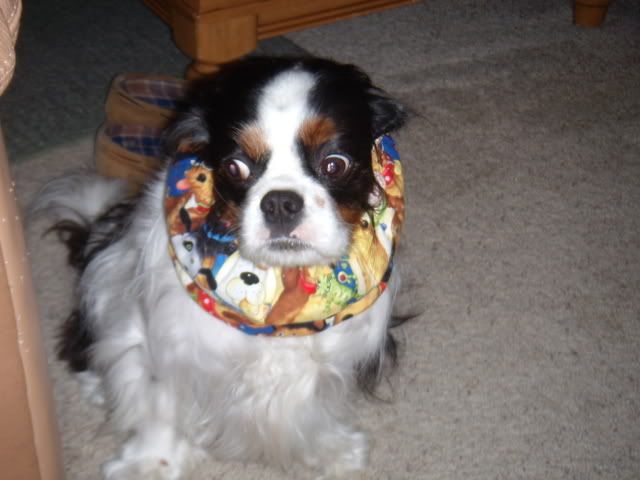Holly
Well-known member
I have started feeding my three Raw from a company called Healthy Pet Products. They LOVE it....I have never seen anything like it! My freezer is stocked up with the beef, chicken, duck necks, and green tripe. For treats, I got freeze-dried chicken hearts.
I have never seen dogs be more excited when its time to eat.... I always stayed away from it because I thought it would be more expensive to feed the raw, but I am finding it works out about the same as a high quality kibble and the dogs are much more excited to eat! If anyone has fussy eaters I HIGHLY recommend giving this a try.
The other great thing about raw (since I have to pick up their poops--yuck!) is that they are so small and they go much less often! Definitely makes for easy clean up--even if Bentley has an accident in the house--which happens on occasion as he is only 5 months.
I do have a question for those of you who feed raw....do you just use paper plates and a snood, or do you wash the same dishes after they have eaten? I find I am doing LOTS of dishes as they eat twice a day... I really need to order some snoods.
I have never seen dogs be more excited when its time to eat.... I always stayed away from it because I thought it would be more expensive to feed the raw, but I am finding it works out about the same as a high quality kibble and the dogs are much more excited to eat! If anyone has fussy eaters I HIGHLY recommend giving this a try.
The other great thing about raw (since I have to pick up their poops--yuck!) is that they are so small and they go much less often! Definitely makes for easy clean up--even if Bentley has an accident in the house--which happens on occasion as he is only 5 months.
I do have a question for those of you who feed raw....do you just use paper plates and a snood, or do you wash the same dishes after they have eaten? I find I am doing LOTS of dishes as they eat twice a day... I really need to order some snoods.

